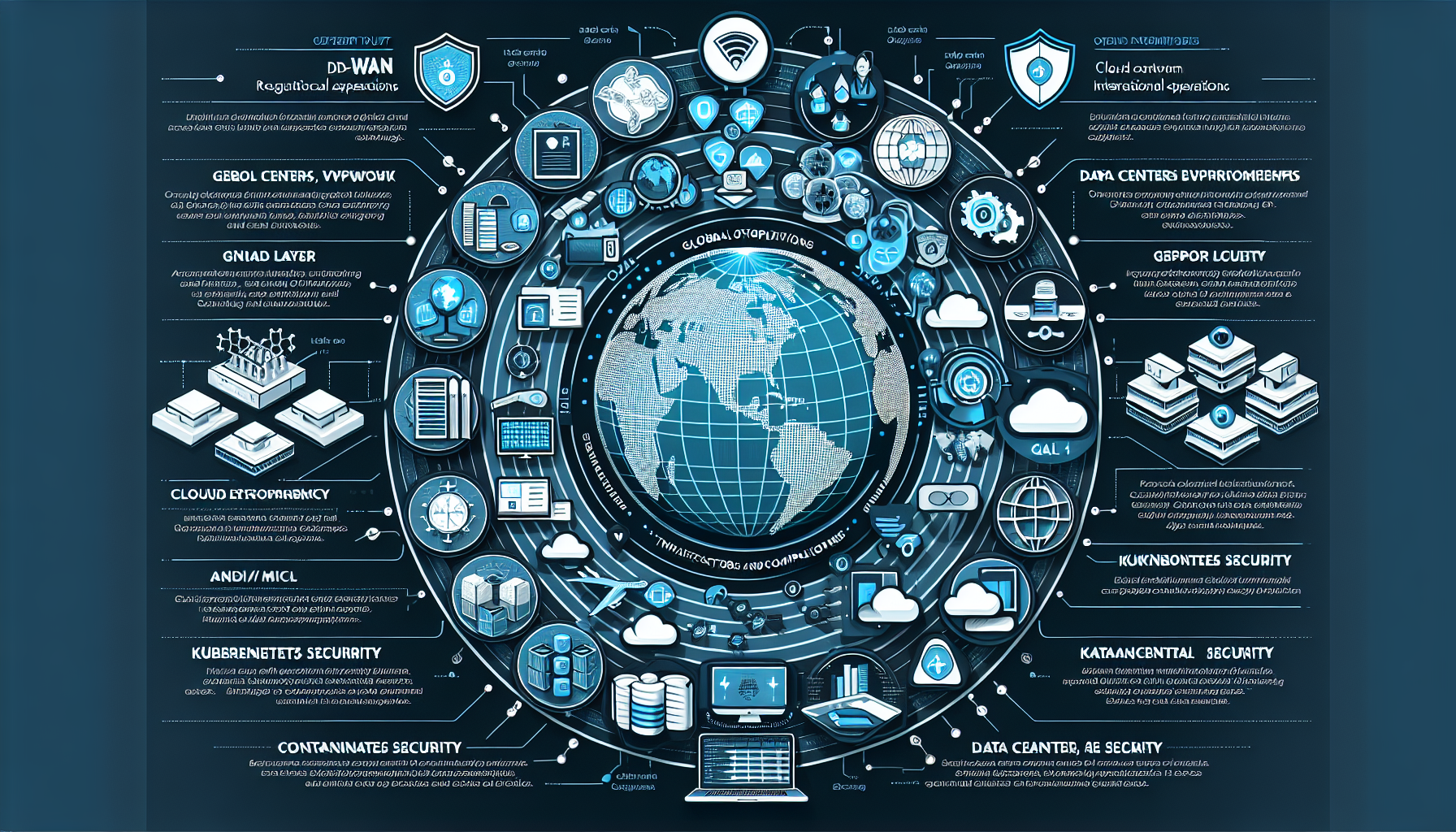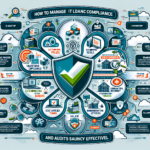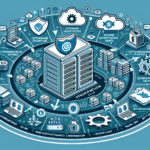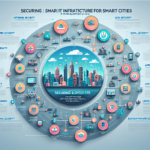Securing IT infrastructure for international operations is a critical challenge as it involves addressing compliance, geopolitical risks, diverse regulatory requirements, and mitigating threats from a wide range of sources. Below is a comprehensive approach to ensuring the security of your IT infrastructure for international operations:
1. Understand Local Regulations and Compliance Requirements
- Data Sovereignty: Ensure data storage and processing comply with local laws (e.g., GDPR in Europe, CCPA in California, PDPA in Singapore).
- Cross-Border Data Transfers: Implement mechanisms like Standard Contractual Clauses (SCC) or Binding Corporate Rules (BCR) for legally transferring data between regions.
- Industry-Specific Standards: Adhere to standards such as ISO 27001, NIST, PCI-DSS, or HIPAA as applicable.
2. Network Security for Global Reach
- Zero Trust Architecture: Adopt a zero-trust model where no device or user is trusted by default, even inside the network.
- Global VPN and SD-WAN: Securely connect international offices with encrypted VPNs or SD-WAN solutions.
- Firewalls and Intrusion Prevention Systems (IPS): Deploy advanced firewalls at all data centers and locations to detect and block malicious traffic.
- Geo-Fencing: Restrict access from high-risk regions where your business does not operate.
3. Cloud and On-Premises Security
- Hybrid Cloud Strategy: Implement consistent security policies across both cloud and on-premises environments.
- Encryption: Use strong encryption (AES-256) for data at rest, in transit, and in use.
- Cloud Security Posture Management (CSPM): Continuously monitor cloud configurations to prevent misconfigurations.
- Backup and DR: Regularly test backups and disaster recovery (DR) plans to ensure data integrity and availability.
4. Endpoint and Device Security
- Endpoint Detection and Response (EDR): Deploy EDR solutions to detect and respond to endpoint threats in real time.
- Patch Management: Regularly patch servers, workstations, storage systems, and other devices to address vulnerabilities.
- Mobile Device Management (MDM): Secure and manage devices used by international teams.
5. Access Management
- Identity and Access Management (IAM): Implement IAM solutions with role-based access control (RBAC).
- Multi-Factor Authentication (MFA): Enforce MFA for all users, including administrators.
- Privileged Access Management (PAM): Secure privileged accounts using PAM tools to monitor and control access.
6. Kubernetes and Container Security
- Cluster Hardening: Secure Kubernetes clusters by disabling unused features, setting up role-based access controls, and encrypting secrets.
- Runtime Security: Use tools like Falco or Aqua Security to monitor containerized workloads for malicious activity.
- Network Policies: Enforce Kubernetes network policies to isolate workloads and limit communication.
7. AI and Machine Learning Security
- Model Security: Protect AI models from attacks like adversarial inputs and model theft.
- Data Integrity: Secure training and inference data pipelines to prevent poisoning attacks.
- Monitoring: Use AI/ML to monitor for anomalous behavior across the infrastructure.
8. Data Center Security
- Physical Security: Ensure that international data centers have access controls, surveillance, and environmental protections.
- Redundant Power and Cooling: Mitigate risks of downtime due to power or cooling issues.
- On-Premise Hardening: Minimize physical attack vectors by disabling unused ports and securing server racks.
9. Storage and Backup Security
- Immutable Backups: Use immutable backups to prevent ransomware from modifying or deleting backup data.
- Encryption: Encrypt backup data both in transit and at rest.
- Offsite Replication: Ensure backups are replicated to geographically diverse locations.
10. Incident Response and Monitoring
- SIEM and SOAR Tools: Deploy Security Information and Event Management (SIEM) and Security Orchestration, Automation, and Response (SOAR) tools for real-time threat detection and response.
- Global Incident Response Plan: Develop and test an incident response plan that accounts for international sites.
- 24/7 Monitoring: Establish a Security Operations Center (SOC) or outsource to a Managed Security Service Provider (MSSP) for round-the-clock monitoring.
11. Governance and Risk Management
- Security Policies: Develop and enforce policies tailored to international operations.
- Regular Audits: Conduct regular security audits and penetration tests to identify vulnerabilities.
- Risk Assessment: Continuously assess and document risks specific to each geographical region.
12. Employee Awareness and Training
- Phishing Awareness: Train employees to recognize and respond to phishing and social engineering attacks.
- Secure Practices: Educate international teams on secure practices like password management and device security.
- Cultural Sensitivity: Tailor security training to align with the cultural and regulatory environment of each region.
13. Geopolitical Threat Assessment
- Cyber Threat Intelligence: Monitor geopolitical risks and threat actors that may target your operations in specific regions.
- Supply Chain Security: Vet international vendors and suppliers to ensure they meet security standards.
- Sanctions Compliance: Ensure operations comply with international trade sanctions and export controls.
14. GPU and High-Performance Computing (HPC) Security
- Secure GPU Workloads: Use secure enclaves and isolation techniques to protect GPU-based workloads.
- Firmware Updates: Regularly update firmware on GPU cards to prevent exploitation of vulnerabilities.
- AI/ML Workload Segmentation: Isolate AI/ML workloads in secure clusters to prevent unauthorized access.
15. Regularly Review and Adapt
- International operations require continuous adaptation to new regulations, evolving threats, and business needs. Conduct regular reviews of your security strategy and update it as needed.
By implementing these measures, you can create a robust security framework for your international IT infrastructure, minimizing risks while maintaining compliance and operational efficiency.




